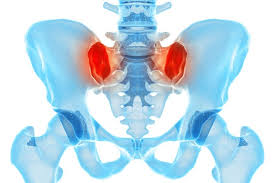The sacroiliac injection involves inserting a needle through skin and deeper tissues. So, there is some pain involved. However, we numb the skin and deeper tissues with a local anesthetic using a very thin needle before inserting the needle into the joint. Some patients also receive sedation that can make the procedure easier to tolerate. This procedure is done under local anesthesia. Some patients also choose to receive some sedation, which can make the procedure easier to tolerate. The amount of sedation given generally depends upon the patient tolerance.
The injection typically done with the patient lying on the stomach and usually done under x-ray. Some thinner patients can sometimes be injected without x-ray. Patients receiving intravenous sedation are monitored with EKG, blood pressure cuff and blood oxygen-monitoring device. The skin in the back is cleaned with antiseptic solution and then the skin may be numbed with local anesthetic. The injection needle is then placed under X-ray guidance. Once in place, the injection is carried out. After the injection, the needle is removed and a Band Aid is applied. The immediate effect is usually from the local anesthetic injected. This wears off in a few hours. The steroid starts working in about three to five days and its effect can last for several days to a few months.
This procedure is generally safe. However, with any procedure there are risks, side effects and the possibility of complications. The most common side effect is temporary pain at the injection site. Uncommon risks involve infection, bleeding or worsening of symptoms. The other uncommon risks are related to the side effects of steroids, including weight gain, increase in blood sugar in diabetics, water retention, and suppression of body’s own natural production of cortisone. Fortunately, the serious side effects and complications are uncommon.
